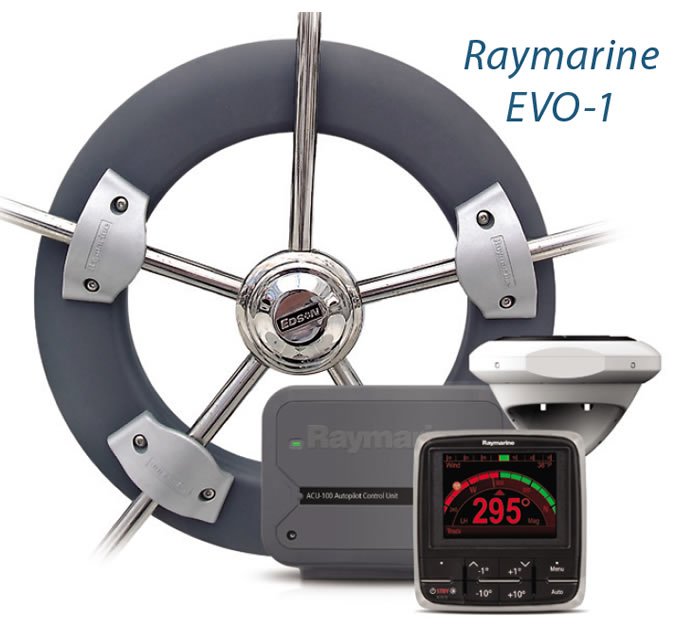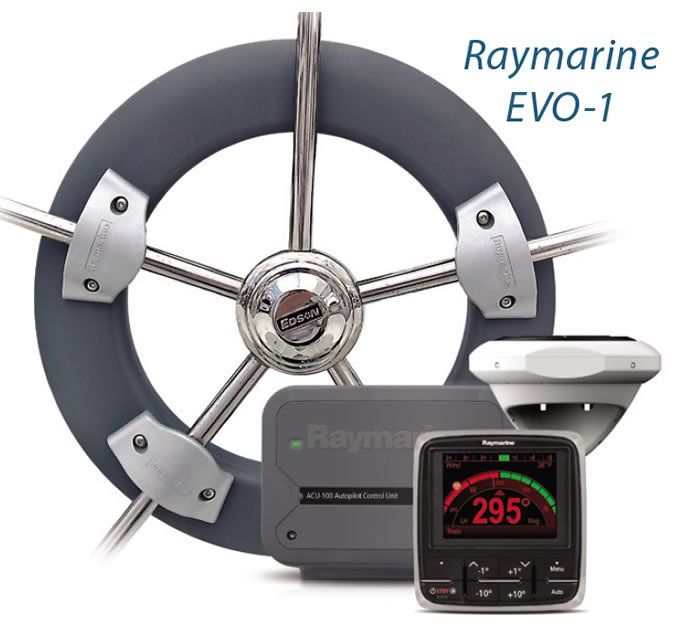Photo courtesy of Raymarine

After three separate three-month cruises-on a Niagara 35 in the Great Lakes and a Gulfstar 36 in Florida-we have found no problems with the EVO-1 autopilot by Raymarine that we first reported on in PS, September 2014. Although we experienced no gale or storm conditions (were cautious in our old age), we did get plenty of practice in heavy winds (15 to 25 knots) and light winds (12 down to drifting), and a great deal of motoring. In all conditions, the autopilot steered the boat exactly to our requirements.
We keep our boats well-balanced under sail, but the EVO-1 had no problems even when the helm loaded up. We never once had to disconnect the autopilot to steer the boat ourselves because of conditions.
The autopilot has three settings-leisure, cruise, and performance-and we found that the performance setting worked best, correcting most frequently and rapidly, and we used it exclusively. The leisure and cruise settings would draw less 12-volt power to the wheel drive and might be suitable for sailboats with minimal battery capacity, but the performance setting never put a heavy drag on our four six-volt batteries and our solar panels.
The main drawbacks of the EVO-1 are those we noted in our original report-you have to adopt the Raymarine version of NMEA 2000, called SeaTalk ng and buy their expensive cabling. Getting the EVO-1 to interact with anyone elses instruments or nav devices will be a challenge. One of our readers discovered that to update the software in the EVO-1, you have to do it through a Raymarine MFD (multi-function display), which many sailors don’t have or want. It seems generally true that Raymarine works best if you totally commit to Raymarine products.
As we said in our original report, the EVO-1 is more of an incremental improvement in autopilots rather than a significant upgrade. If we have a fully operational earlier version-ST4000 or even an Autohelm 4000-we wouldnt upgrade. The easy set-up function and the brainy self-adjustments for steering by the EVO-1 sensor and ACU are nice improvements, but not overwhelming.
If we found it necessary to upgrade our autopilot or all our electronics, wed seriously look at other brands.
WinchRite Redesign
The original WinchRite, which we reported on in the Feb. 15, 2010 blog, has been discontinued. The power-assisted winch grinder was redesigned to address performance problems and complaints from customers (including some PS readers), according to the manufacturer, Sailology.
The new, improved model is called the WinchRite ABT (Advanced Brushless Technology). Sailologys Sven Toothman explained that every component of the ABT has been improved, including a brushless motor, the battery, PC electronics, gearbox, and accessories.
The manufacturer has created two programs for current owners of the discontinued original WinchRite, which was in production from 2010 until summer 2014. Owners can trade in their discontinued or out-of-warranty WinchRite, regardless of condition, for a $300 credit toward the new ABT model, redeemable only through Sailology; this amounts to almost a 45-percent discount off of list price, making the purchase $449 with free shipping. The second program allows owners to have any out-of-warranty, original WinchRite refurbished for $239. This includes having the motor and gear box serviced or replaced and the battery exchanged. For more information, contact Sailology at www.sailology.com.
Practical Sailor plans to test the new WinchRite ABT for an upcoming report.









































